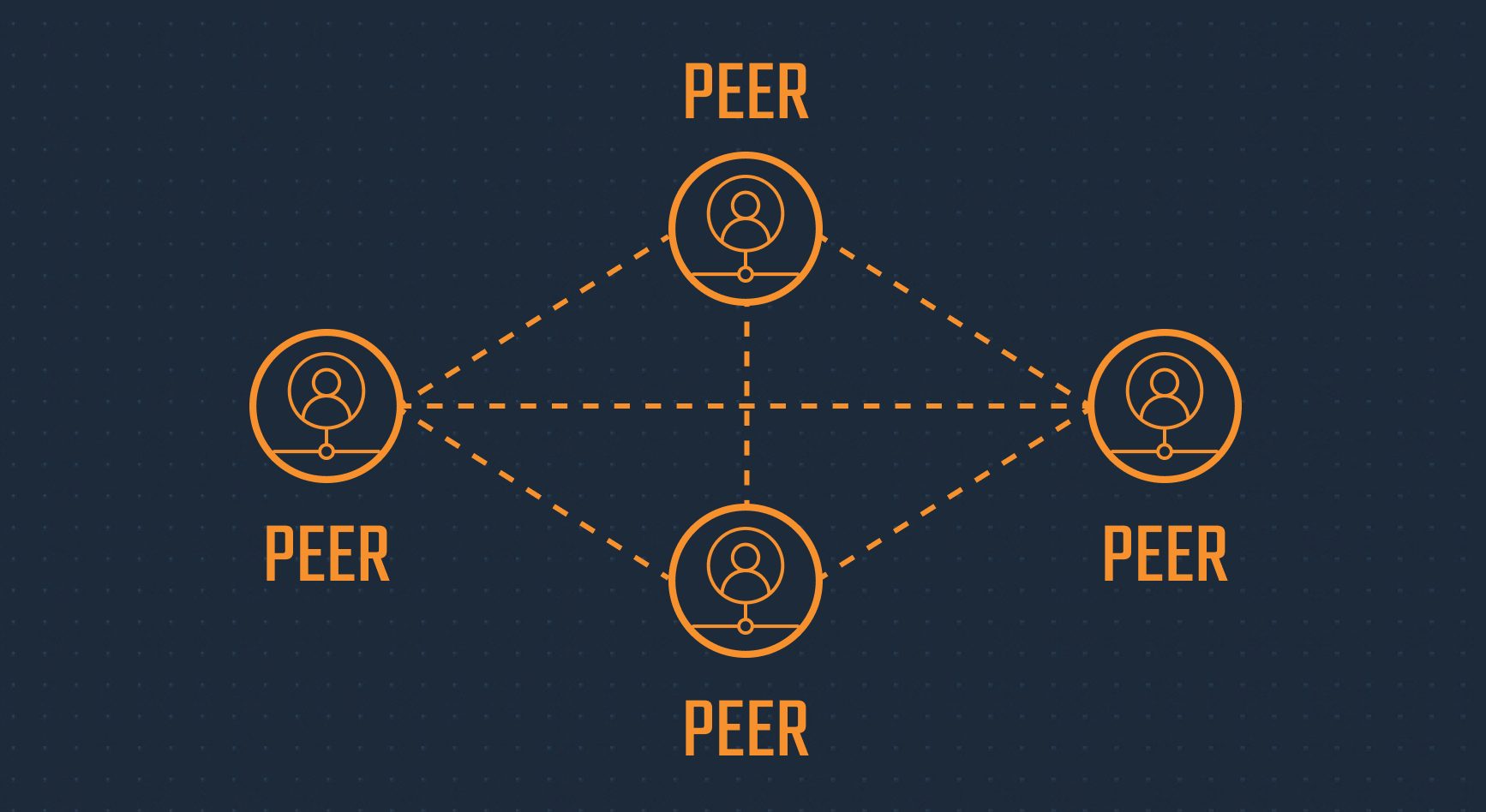Introduction
Are you tired of experiencing lag while using online applications, playing multiplayer games, or streaming videos? Lag, the delay between an action and its response, can be frustrating and greatly diminish the overall user experience. However, there is a solution to help reduce lag and improve your online performance – Peer-to-Peer (P2P) technology.
Lag is often caused by limitations in connection speeds, network congestion, or bottlenecks in data transmission within a centralized server system. P2P technology offers an alternative approach by distributing data transfer among devices directly connected to the network, instead of relying solely on a central server. This decentralization can significantly reduce lag and improve the efficiency of data delivery.
In this article, we will explore the concept of P2P technology and its benefits in reducing lag. We will also provide insights on how to choose the right P2P solution for your needs, set it up effectively, and optimize its performance for optimal lag reduction. So, if you’re ready to say goodbye to frustrating lag spikes and enjoy smoother online experiences, keep reading.
What is lag and why does it happen?
Lag refers to the delay or latency between performing an action and seeing the desired response. It can manifest in various ways, such as slow loading times, delayed character movements in games, buffering while streaming videos, or even voice distortion during online calls. Lag can be caused by a variety of factors:
- Internet Connection Speed: If your internet connection is slow, it will take longer for data to be transmitted between your device and the server, resulting in lag.
- Network Congestion: When multiple devices are connected to the same network and try to access resources simultaneously, it can overload the network and lead to laggy connections.
- High Ping: Ping is a measure of the time it takes for data to travel from your device to the server and back. High ping can cause delays in data transmission and result in lag.
- Server Performance: If the servers hosting online applications or games are experiencing high loads or are not well-optimized, it can lead to laggy gameplay or slow response times.
Traditional centralized server systems have limitations in managing high volumes of data traffic, resulting in increased lag. This is where P2P technology comes into play.
P2P technology allows users to share and distribute data directly between devices connected to the network, rather than relying on a centralized server. Each device acts as both a client and a server, contributing to the distribution of data and reducing the burden on a single server. This decentralized approach can mitigate lag by optimizing data transfer and improving response times, resulting in smoother online experiences.
Understanding P2P (Peer-to-Peer) technology
P2P, or Peer-to-Peer, technology is a decentralized network architecture that allows devices connected to the network to interact directly with each other. Instead of relying on a centralized server, P2P distributes the workload across multiple devices, resulting in improved efficiency and reduced lag.
In a P2P network, each device, or peer, can act both as a client and a server. This means that a device can request and receive data from other devices on the network, as well as share its own data with them. This direct communication between peers eliminates the need for a central authority to manage and distribute data.
One of the key advantages of P2P technology is its scalability. As more devices join the network, the overall capacity and resources available for data transfer increase. This scalability allows P2P networks to handle high volumes of data traffic without experiencing significant performance degradation.
P2P networks are commonly used for file sharing applications, where users can upload and download files directly from other users on the network. Additionally, P2P technology has applications in content streaming, online gaming, and voice over IP (VoIP) communication.
It’s important to note that P2P technology does require an initial connection to a central server or bootstrapping server to facilitate the discovery of other peers on the network. Once the initial connection is established, peers can communicate directly with each other, reducing the dependence on the central server for ongoing data transfer.
While P2P technology offers numerous benefits, it also raises concerns regarding security and data privacy. Since data is shared directly between peers, it’s essential to implement appropriate security measures to protect sensitive information. Additionally, P2P networks must ensure that all participants adhere to ethical guidelines and respect copyright laws when sharing files.
Now that we have a better understanding of P2P technology, let’s explore the advantages it brings in reducing lag and improving online performance.
Benefits of using P2P for reducing lag
Peer-to-Peer (P2P) technology offers several advantages when it comes to reducing lag and improving online performance. Let’s explore some of the key benefits:
- Reduced Reliance on Centralized Servers: P2P networks distribute data transfer among connected devices, reducing the burden on centralized servers. This decentralization improves efficiency and response times, leading to reduced lag.
- Improved Scalability: P2P networks can handle high volumes of data traffic without significant performance degradation. As more devices join the network, the overall capacity for data transfer increases, allowing for smoother online experiences.
- Optimized Data Transfer: P2P technology utilizes multiple paths for data transfer, allowing for faster and more efficient data delivery. Data can be retrieved from multiple sources simultaneously, ensuring a more reliable and robust connection.
- Resilience to Network Congestion: P2P networks are designed to handle network congestion effectively. Since data is distributed among devices, it reduces the likelihood of a single point of failure, resulting in improved performance during peak usage times.
- Lower Costs: Implementing P2P technology can lead to significant cost savings. By utilizing existing computing resources of connected devices, the need for expensive server infrastructure is reduced.
- Enhanced User Experience: With reduced lag, users can enjoy smoother gameplay, faster file downloads, and uninterrupted streaming experiences. P2P technology helps create a more immersive and enjoyable online environment.
It’s important to note that the effectiveness of P2P in reducing lag may depend on various factors, such as the number of peers on the network, the stability of internet connections, and the overall network infrastructure. However, when implemented and optimized correctly, P2P technology can significantly enhance online performance and minimize laggy connections.
Now that we understand the benefits of P2P technology in reducing lag, let’s explore how to choose the right P2P solution for your needs.
Choosing the right P2P solution for your needs
When it comes to selecting the right Peer-to-Peer (P2P) solution to reduce lag, there are several factors to consider. Here are some key considerations to help you make an informed decision:
- Application Compatibility: Ensure that the P2P solution you choose is compatible with the specific application or use case where you experience lag. Different P2P solutions are optimized for different types of applications, such as file sharing, streaming, or online gaming.
- Network Size and Scalability: Consider the size of your network and its potential for growth. Choose a P2P solution that can handle the scale of your network and is capable of efficiently distributing data among peers, even as the network expands.
- Security and Privacy: Data security should be a top priority when selecting a P2P solution. Look for solutions that offer robust encryption protocols and ensure that sensitive information is protected. Additionally, choose a solution that respects user privacy and adheres to ethical data-sharing practices.
- Performance Optimization: Evaluate the performance optimization features offered by different P2P solutions. Look for features such as bandwidth management, congestion control mechanisms, and adaptive streaming for video or audio content. These optimizations can help improve data transfer speeds and reduce lag.
- Community Support: Consider the availability of a supportive and active community around the P2P solution. A thriving community can provide valuable resources, troubleshooting tips, and updates to ensure the smooth operation of the P2P network.
- Compatibility with Existing Infrastructure: Ensure that the P2P solution you choose is compatible with your existing network infrastructure and devices. Compatibility is crucial to ensure a seamless integration of the P2P solution without causing disruptions or conflicts.
It is also recommended to research and compare different P2P solutions, read user reviews, and consult with experts or professionals in the field to gather insights and recommendations. Taking the time to evaluate and select the right P2P solution for your needs will go a long way in reducing lag and optimizing your online performance.
With the right P2P solution in place, it’s time to set up P2P effectively and ensure optimal performance. Let’s delve into the next section to learn more.
Setting up P2P for lag reduction
Once you’ve chosen the appropriate Peer-to-Peer (P2P) solution for lag reduction, it’s crucial to ensure a proper setup to maximize its effectiveness. Here are some steps to set up P2P effectively:
- Install and Configure the P2P Software: Begin by downloading and installing the P2P software that corresponds to your chosen solution. Follow the provided instructions to configure the software based on your network requirements.
- Connect to the P2P Network: Launch the P2P software and connect to the P2P network by following the provided prompts. This may involve creating an account, logging in, or entering network-specific information.
- Adjust Bandwidth Settings: Depending on your internet connection and network requirements, adjust the bandwidth settings within the P2P software. Allocating sufficient bandwidth ensures optimal data transfer and helps reduce lag.
- Optimize Sharing and Downloading Preferences: If you’re using the P2P solution for file sharing or downloading, configure the software to prioritize files based on your preferences. For instance, you may prioritize files with more seeders or files that have a higher download priority.
- Implement Quality of Service (QoS) Settings: If your router or network supports Quality of Service settings, prioritize P2P traffic to ensure that it receives adequate bandwidth and doesn’t disrupt other network activities. Consult the router documentation or network administrator for guidance on configuring QoS settings.
- Consider Firewall and Port Forwarding: Adjust your firewall settings to allow P2P traffic and ensure that the required ports are open for communication. This step is essential to establish connections with other peers on the network.
- Regularly Update P2P Software: Keep the P2P software up to date by installing the latest updates and patches. Regular updates often include bug fixes, performance enhancements, and security improvements that can contribute to reducing lag and ensuring a smooth experience.
It’s important to note that the specific steps and settings for setting up P2P may vary based on the chosen solution and network environment. Reference the documentation or online resources provided by the P2P software provider for detailed instructions and troubleshooting guidelines.
With P2P properly set up, the focus now shifts to optimizing its performance to further reduce lag. In the next section, we will explore some useful tips for optimizing P2P performance.
Tips for optimizing P2P performance
Once you have set up Peer-to-Peer (P2P) technology to reduce lag, there are several tips and techniques you can implement to further optimize its performance. These tips will help ensure that your P2P network operates efficiently and delivers the best possible lag reduction. Here are some useful tips:
- Use a Wired Connection: Whenever possible, connect your device to the network using an Ethernet cable rather than relying on Wi-Fi. Wired connections tend to provide more stable and consistent data transfer, which can improve P2P performance and reduce lag.
- Limit Background Network Activities: To avoid any potential interference with P2P traffic, reduce or temporarily pause other bandwidth-intensive activities, such as video streaming or large file downloads, while using P2P.
- Manage Bandwidth Allocations: Within the P2P software settings, allocate bandwidth appropriately to ensure a balance between P2P traffic and other network activities. Adjusting the bandwidth allocation can help prevent P2P from monopolizing the network and causing latency issues for other applications.
- Connect to Peers with High Uptime and Speed: Prioritize connections with peers who have a high uptime and fast upload speeds. This can help improve the overall speed and reliability of data transfer within the P2P network.
- Choose Optimal Download and Upload Limits: Adjust the download and upload limits in the P2P software to match your network capacity and available bandwidth. Setting appropriate limits can help prevent network congestion and maintain a stable connection.
- Regularly Monitor and Manage Seeders and Leechers: Seeders are the peers who have fully downloaded a file and are sharing it, while leechers are those who are downloading the file. Keep an eye on the number of seeders and leechers for the files you are interested in and try to prioritize files with a higher number of seeders for faster downloads.
- Participate in Active P2P Communities: Engage with other users in active P2P communities, forums, or support groups related to your chosen P2P solution. Sharing insights, tips, and troubleshooting experiences can help improve P2P performance and reduce lag.
- Regularly Update P2P Software: Keep your P2P software up to date by installing the latest updates and patches. Updates often include bug fixes, performance enhancements, and new features that can contribute to optimizing P2P performance.
Implementing these tips can significantly enhance the performance and effectiveness of your P2P network, resulting in reduced lag and improved online experiences. However, it’s important to note that P2P performance may vary based on network conditions, the number of peers, and other factors specific to your environment.
In the next section, we will explore how to monitor and troubleshoot P2P lag issues to maintain optimal performance.
Monitoring and troubleshooting P2P lag issues
While Peer-to-Peer (P2P) technology can help reduce lag, occasional performance issues may still arise. To ensure optimal performance, it’s important to monitor and troubleshoot any lag-related problems that may occur within your P2P network. Here are some monitoring and troubleshooting tips to help you address P2P lag issues:
- Monitor Network Traffic: Use network monitoring tools to track the traffic generated by your P2P network. This can help identify any irregularities or congestion that may be causing lag. Monitoring tools can also provide insights into data transfer rates, latency, and overall network performance.
- Check for Software Updates: Regularly check for updates for both your P2P software and any associated plugins or extensions. Updates often address performance issues, bug fixes, and security vulnerabilities, which can significantly improve P2P performance.
- Scan for Malware or Viruses: Run a comprehensive scan on your device to detect and remove any malware or viruses that could potentially interfere with P2P performance. Malware or viruses can consume system resources, leading to lag and poor network performance.
- Review Port Forwarding Configurations: Ensure that the necessary ports required for P2P communication are properly configured in your router’s port forwarding settings. Incorrect port configurations can lead to blocked connections, resulting in slower data transfer and increased lag.
- Verify Firewall Settings: Review your firewall settings to ensure that they allow P2P traffic. Adjust firewall rules or exceptions if necessary to prevent it from obstructing P2P network communication. It’s important to strike a balance between security and allowing P2P traffic to flow smoothly.
- Evaluate Network Hardware: Examine your network hardware, including routers, switches, and network cables, to ensure they are in good condition and functioning optimally. Faulty or outdated network hardware can negatively impact P2P performance and contribute to lag issues.
- Optimize Upload and Download Rates: Adjust the upload and download rates within your P2P software settings to find the optimal balance for your network. Experiment with different settings to see which configurations provide the best performance and reduce lag.
- Consider Network Prioritization: If you have multiple devices connected to the same network, consider implementing Quality of Service (QoS) settings to prioritize P2P traffic. Allocating sufficient bandwidth to P2P can help minimize lag by ensuring the uninterrupted flow of data.
- Engage with P2P Community: Reach out to online P2P communities, forums, or support channels to seek guidance from experienced users. They can provide valuable insights and troubleshooting tips based on their own experiences.
By monitoring your P2P network and addressing any lag-related issues promptly, you can maintain optimal performance and ensure a smooth and enjoyable online experience.
In the final section, we will summarize the key points discussed and offer some closing thoughts on using P2P to reduce lag.
Conclusion
Peer-to-Peer (P2P) technology offers a promising solution to reduce lag and enhance online performance. By distributing data transfer among connected devices, P2P alleviates the strain on centralized servers and optimizes the efficiency of data delivery. Through the decentralization of network resources, P2P improves scalability and resilience to network congestion, resulting in smoother online experiences.
In this article, we explored the concept of lag and its causes, highlighting the limitations of traditional centralized server systems. We then delved into the fundamentals of P2P technology, understanding its decentralized network architecture and the benefits it brings in reducing lag.
We discussed the importance of choosing the right P2P solution that aligns with your specific needs and network environment. Additionally, we provided tips for setting up P2P effectively, optimizing its performance, and troubleshooting any potential lag-related issues that may arise.
While P2P technology can significantly reduce lag, it’s worth noting that its effectiveness may vary depending on factors such as network conditions, the number of peers, and other specifics of your environment. Regular monitoring, maintenance, and keeping up-to-date with software and hardware configurations can help ensure the smooth operation of your P2P network.
In conclusion, P2P technology offers a compelling solution for lag reduction, improving online performance across various applications, such as file sharing, streaming, gaming, and more. By leveraging its benefits and implementing the tips and techniques discussed in this article, you can enjoy smoother, faster, and more enjoyable online experiences.

























